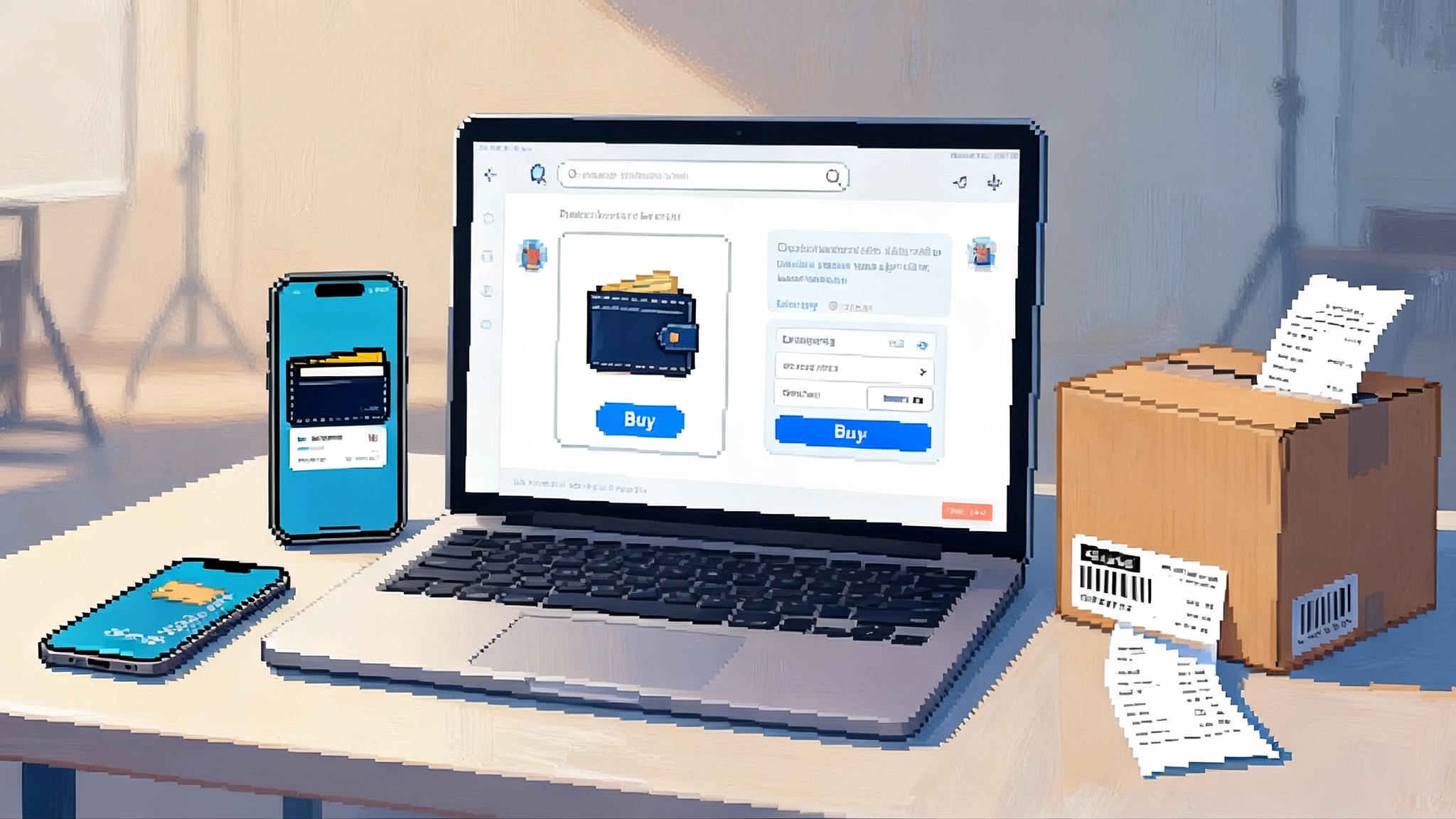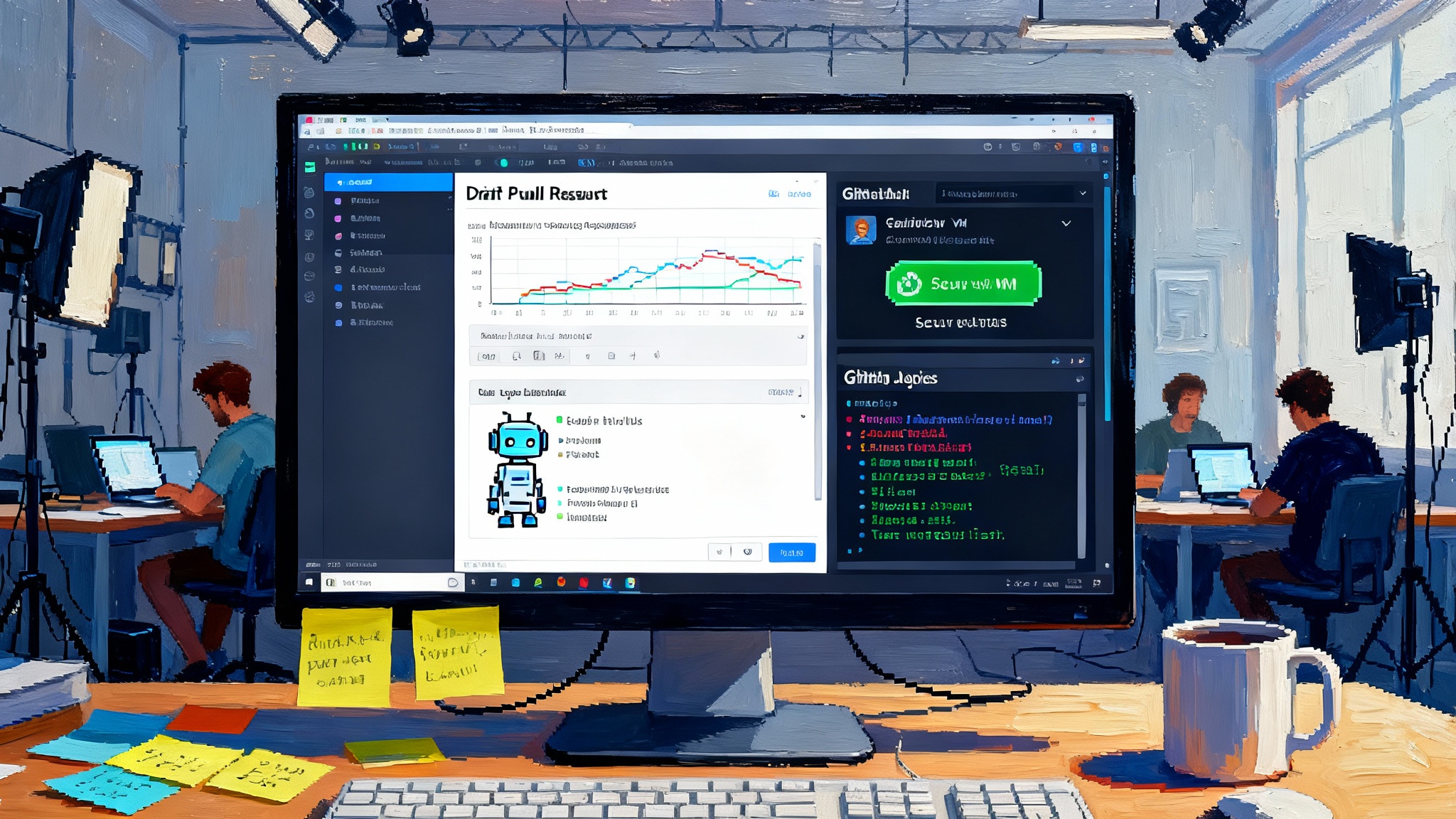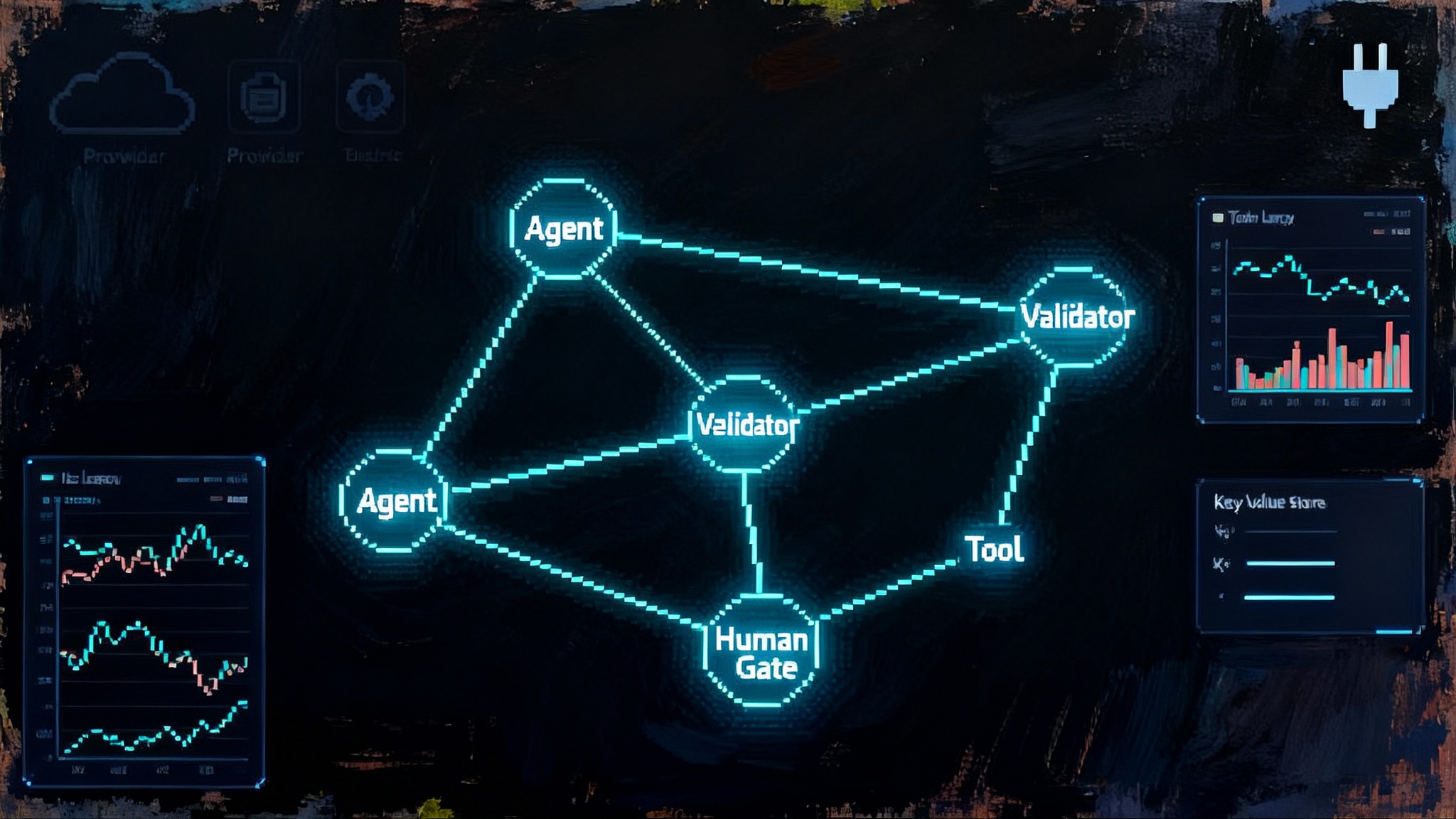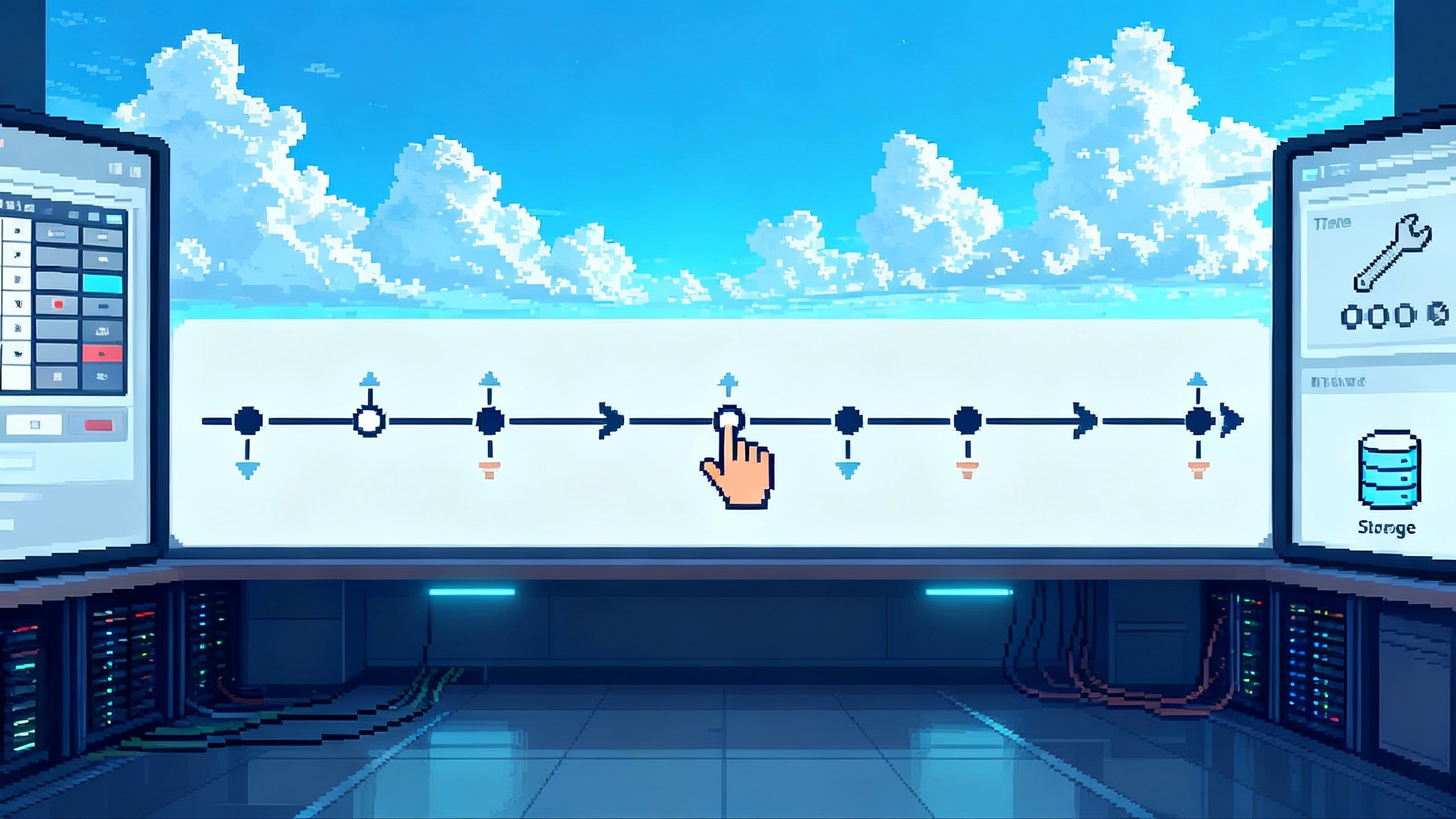Agentic Commerce Arrives: ChatGPT Instant Checkout and ACP
OpenAI is turning chat into a checkout counter. Here is what ChatGPT Instant Checkout and the Agentic Commerce Protocol mean for developers, brands, and the next wave of agent-driven shopping.

The storefront moves into the chat
A new phase of online shopping has begun. OpenAI has introduced Instant Checkout in ChatGPT, the first step toward letting people, agents, and businesses complete purchases without leaving a conversation. It launches in the United States with Etsy listings available now and support for Shopify merchants coming next, starting with single item purchases and expanding to carts and new regions. The system runs on a shared technical foundation called the Agentic Commerce Protocol, built with Stripe and designed so any compatible agent can talk to any compatible seller. You can read the announcement in OpenAI’s post, which also previews brands like Glossier, SKIMS, Spanx, and Vuori joining as Shopify support rolls out, in Buy it in ChatGPT.
If search engines turned every website into a storefront window, chat is about to turn the conversation itself into the cash register. What changes is not only where the purchase happens, but who orchestrates it. Instead of a human clicking through pages, an AI agent gathers options, explains tradeoffs, and, with your approval, completes checkout on your behalf.
From recommendations to transactions
Until now, most chat shopping ended at recommendations. You compared products, got a short list, then clicked out to a merchant site to pay. Instant Checkout changes the end of that flow. When an item supports the new protocol, ChatGPT can present a Buy button, show a native checkout, and submit the order to the seller, all within the chat. You still see your order details and confirm payment, but the tedious parts of web navigation drop away.
This shift matters for three reasons:
- Fewer steps means fewer abandoned carts. Removing context switches from chat to browser often saves the sale.
- The agent can personalize decisions. It already knows your constraints, like budget or size, and can ask only the questions that matter.
- Merchants keep control. They still manage catalog, inventory, fulfillment, and policies; the agent simply becomes a power user of their checkout.
Think of it like a skilled retail associate who stands at the cash wrap with you, not a marketplace that takes over your business.
What the Agentic Commerce Protocol actually does
Protocols sound abstract, so here is the simple version. The Agentic Commerce Protocol, or ACP, is a standard set of messages that lets an agent and a seller run a checkout together. The seller exposes endpoints that say things like “create a checkout,” “update shipping,” and “confirm payment.” The agent calls those endpoints, renders the user interface inside chat, collects the buyer’s choices, and passes payment credentials securely. Stripe has published the technical documentation for ACP and how to integrate it with existing payment stacks in Integrate the Agentic Commerce Protocol.
Key pieces to know:
- Create and update checkout sessions. The agent starts with a CreateCheckout request that includes items, quantities, and buyer hints. The seller returns a checkout state, including pricing, tax, shipping options, and any required fields. The agent updates that state as the buyer chooses shipping speed or adds a gift message.
- Delegated payment credentials. Instead of the seller collecting a card directly in chat, the agent can pass a scoped token that represents an approved payment method. In Stripe’s model this is a Shared Payment Token, time bound and tied to a single transaction. The merchant processes it in their own stack with their risk controls. For a deeper architectural lens on securing tokens and scopes, see our primer on the credential broker layer for safe agents.
- Division of responsibilities. The agent handles user interface and data capture. The seller remains the merchant of record, stores order artifacts in their existing systems, and owns customer service.
If you know how to run a normal ecommerce checkout, you already know 90 percent of ACP. The remaining 10 percent is about trusting an agent to be your front end and speaking a common language that any agent can understand.
What this unlocks for developers
The immediate opportunity is to make your products legible to agents and your checkout accessible through ACP. In practice, that means three developer tasks.
- Product feeds that agents can reason about
Agents need structure. Create an agent friendly catalog that contains normalized attributes for variant selection, pricing, regional availability, and lead times. Include policy signals like return window, warranty basics, and contact channel. If you already publish a product feed for marketplaces or advertising, you can map it to a concise agent schema. Keep attribute names consistent and reduce free text where it blocks automation. Think “color: navy” and “size: 8” rather than “comes in a beautiful midnight blue.”
- Delegated payments under your control
With delegated payments, the agent collects or references the buyer’s method, then hands your backend a secure token with enough context for fraud tools to evaluate. Treat that token like a card in your existing gateway. Enforce your velocity limits and require shipping to verified addresses. Log which agent initiated the transaction so you can segment risk and support requests. If you support network tokens, wallets, or account to account rails, plan for those methods to appear through the same delegated channel.
- Checkout sessions instead of web pages
Agents do not need your templates; they need your logic. Build endpoints for creating and updating checkout sessions that return a complete state: totals, shipping options, taxes, and any line level adjustments. Include machine readable error messages with clear next steps, like “address requires apartment number” or “item backordered, earliest ship date is November 5.” The more precise your state and errors, the less the agent needs to guess.
Instrument everything. Emit events for session created, option selected, payment authorized, and order confirmed. You will want this telemetry to debug misalignments between what the agent displayed and what your system expected.
What this unlocks for brands and retailers
For brands, agentic shopping is not another marketplace you must feed. It is a new merchandising surface that sits on top of your existing stack.
- Merchandising inside conversations. Your images, copy, and options appear where the customer is already researching. You can emphasize sustainability badges, fit helpers, or size charts, and the agent can highlight the most relevant detail for that buyer.
- Control and accountability. You keep pricing, inventory control, and fulfillment in your systems. Orders flow through your existing pipelines. Returns and customer support remain your relationship.
- New performance levers. You can test how free shipping thresholds, bundles, or same day options change agent recommendations and conversion. You can decide which products you want to make available to agentic checkout and which should remain direct only.
The brands that win will treat agents like a high performing affiliate that sits at the moment of consideration. Give them clean data, clear policies, and fast fulfillment, and they will reward you with placement in the conversation.
How this reshapes SEO, affiliates, and marketplaces
Search engine optimization trained companies to write for crawlers. Agent optimization will train companies to write for interpreters. The difference is that agents are not ranking pages; they are assembling decisions. That changes incentives:
- Product detail pages matter less than product truth. If your feed claims two day delivery and your system misses it, agents will learn and downrank you. Fewer glossy adjectives, more consistent facts.
- Affiliates become choosers, not link droppers. Placement will hinge on verified fulfillment, warranty policies, and return friction. Expect dynamic affiliate models that reward post purchase outcomes, not only clicks.
- Marketplaces will need to open their walls. Some will publish agent readable catalogs and ACP compatible endpoints. Others will try to keep discovery and checkout inside their own apps. Sellers will favor the option that preserves control and reduces fees while preserving reach.
In the near term, Etsy’s presence gives the model an immediate inventory base, and the planned Shopify integration puts a long tail of brands within reach. The race will be to become the default agent capable catalog in each category and region.
The standards race is on
Protocols attract ecosystems. ACP is the first broadly visible standard for chat based checkout, but it will not be the last. Expect a few fronts of competition.
- Cloud agent stores. Large platforms will curate agent compatible catalogs, developer policies, and trust frameworks. Some will bundle their own checkout surfaces; others will route through standards like ACP. Policies for returns, seller verification, and dispute handling will become part of the product.
- Payment rails. Consumers love wallets that are a tap away. Apple Pay, Google Pay, and Stripe’s Link are the kinds of rails that remove friction for buyers. In parallel, account to account systems like the Unified Payments Interface in India or Pix in Brazil show how instant bank payments can become mainstream. Different regions will favor different rails, so the winning agent standards must be multi rail from day one.
- Identity and risk. Agents can do more risk work up front, from address verification to device trust, which should reduce false declines and chargebacks. Standards for passing risk signals will matter as much as the payment token itself. For the broader stack context, see the LangChain and LangGraph agent runtime.
This standards race will play out in the open, because sellers do not want redundant integrations. The protocols that win will make it easy for any credible agent to speak to any prepared merchant, with room for competition in user experience and risk models.
A 30-60-90 day playbook for merchants
You do not need a research lab to get started. You need a focused sprint. Here is a pragmatic plan.
Days 0 to 30: Prove readiness
- Join the relevant early access lists and secure a test merchant environment.
- Inventory your catalog and policies. Identify the 50 to 200 products you are comfortable selling through agentic checkout. Capture attributes that agents need to compare: sizes, materials, fit notes, delivery windows.
- Draft an agent friendly product feed. Normalize variant options. Remove sales copy that confuses parsing. Add machine readable return windows and warranty basics.
- Map your checkout logic. Document shipping methods, tax rules, and discount edge cases. Define a minimal set of fields required to place an order. Add clear error codes for the top 20 failures you see in your current checkout.
- Decide your payment posture. Choose which methods you will accept through delegated tokens and define fraud guardrails like velocity limits and address matching.
- Stand up an observability plan. Plan to log every agent initiated session and the final order, with correlation identifiers, so you can trace failures end to end.
Days 31 to 60: Build the bridge
- Implement ACP compatible endpoints for create checkout, update checkout, and confirm order. Keep the contract minimal but complete. Return accurate totals and shipping promises.
- Integrate delegated payment tokens in your processor. Treat them as first class methods in the same fraud and reconciliation flows you use today.
- Create a test harness that simulates an agent. Exercise common flows and edge cases, like out of stock at confirm step or an address missing an apartment number.
- Prepare brand assets for agent surfaces. Provide clean images, short bullet summaries, and a one sentence value proposition per item. Avoid text embedded in images since agents will reflow layouts.
- Update support and operations. Tag orders that originated from agents. Train your team to handle clarifications in plain language, because buyers will reference what the agent told them.
- Write your trust signals. Summarize how you handle returns, exchanges, delivery issues, and contact hours in a compact, machine readable section of your feed.
Days 61 to 90: Ship and learn
- Launch a controlled pilot for a subset of products. Choose items with reliable inventory and straightforward shipping.
- Measure conversion lift versus your web checkout for the same products. Watch for failure patterns like address mismatches or tax mismatches.
- Iterate on prompts and policies that guide the agent’s recommendations. If you know a certain size runs small, put that into the feed. If free shipping kicks in at 75 dollars, let the agent know so it can propose a bundle.
- Expand to bundles and multi item carts as the platform supports them. Test how the agent handles cross sell rules and backorder splits.
- Align your affiliate and marketplace strategy. Decide how agentic orders fit with your attribution model and whether you adjust spending on paid search as agent conversions rise.
By day 90 you should have a small but healthy set of agent ready products, an operational playbook, and the metrics to justify broader rollouts.
What comes next: agent to agent buying
People to agent is the first inning. The compelling near term shift is agent to agent. Here is what that will look like over the next year.
- Routine replenishment. Your household agent notices you are low on dog food, checks your preferred brand, and reorders through the seller’s ACP endpoint using your default payment token. You approve once and set a monthly cap.
- Coordinated bundles. A travel agent books flights while a retail agent locks in carry on luggage that meets the airline’s size policy, and a pharmacy agent schedules a refill for travel dates. Your approval tiles show a single total and each merchant receives their order separately.
- Negotiated service levels. Agents compare not only prices but delivery promises and return friction. Sellers that publish reliable two day delivery with clear refund timelines get chosen more often.
- Faster post purchase loops. If a delivery is delayed, your agent requests a partial refund or expedited reship based on the seller’s policy, without you opening an email thread.
For this to work at scale, tokens will carry more structured risk signals, receipts will standardize, and returns will become part of the protocol, not a separate support process. The reward is fewer spreadsheets, fewer inboxes, and more shopping that feels invisible because it is handled for you.
How to think about it if you build platforms
If you run a platform or marketplace, the strategic question is whether to become an ACP speaking seller, expose your own agent endpoints, or both. The safest approach is to support standards that let sellers reach buyers in multiple agents while preserving your brand’s value. If you keep a private agent ecosystem, make sure sellers see clear lift and not only new fees. For enterprise builders, the Microsoft enterprise agent framework is a useful reference for how platform primitives can unify agent policy and orchestration.
If you build agents, treat merchants as partners, not inventory. Attentively handle consent, payment scope, and policy disclosure. Make the user’s approval moment legible and fast. Your advantage will be trust, not just reach.
The bottom line
Agentic commerce turns chat from a recommendation service into a transaction surface. Instant Checkout shows the shape of what is coming, and ACP gives everyone a shared language to build on. For developers, the work is mostly about clean feeds, delegated payments, and checkout sessions. For brands, it is about owning the relationship while letting agents do the heavy lifting.
The next decade of ecommerce will be built by conversations that end with paid orders. The teams that start preparing now will discover that the hardest part is not writing new code. It is writing down your business rules so an agent can do them correctly the first time.








